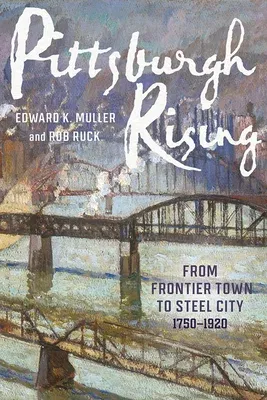Edward K Muller
(Author)Pittsburgh Rising: From Frontier Town to Steel City, 1750-1920Hardcover, 16 May 2023

Qty
1
Turbo
Ships in 2 - 3 days
In Stock
Free Delivery
Cash on Delivery
15 Days
Free Returns
Secure Checkout

Print Length
296 pages
Language
English
Publisher
University of Pittsburgh Press
Date Published
16 May 2023
ISBN-10
0822947722
ISBN-13
9780822947721
Description
Product Details
Authors:
Book Format:
Hardcover
Country of Origin:
US
Date Published:
16 May 2023
Dimensions:
22.86 x
16.51 x
4.83 cm
Genre:
Mid-Atlantic
ISBN-10:
0822947722
ISBN-13:
9780822947721
Language:
English
Pages:
296
Publisher:
Weight:
703.07 gm